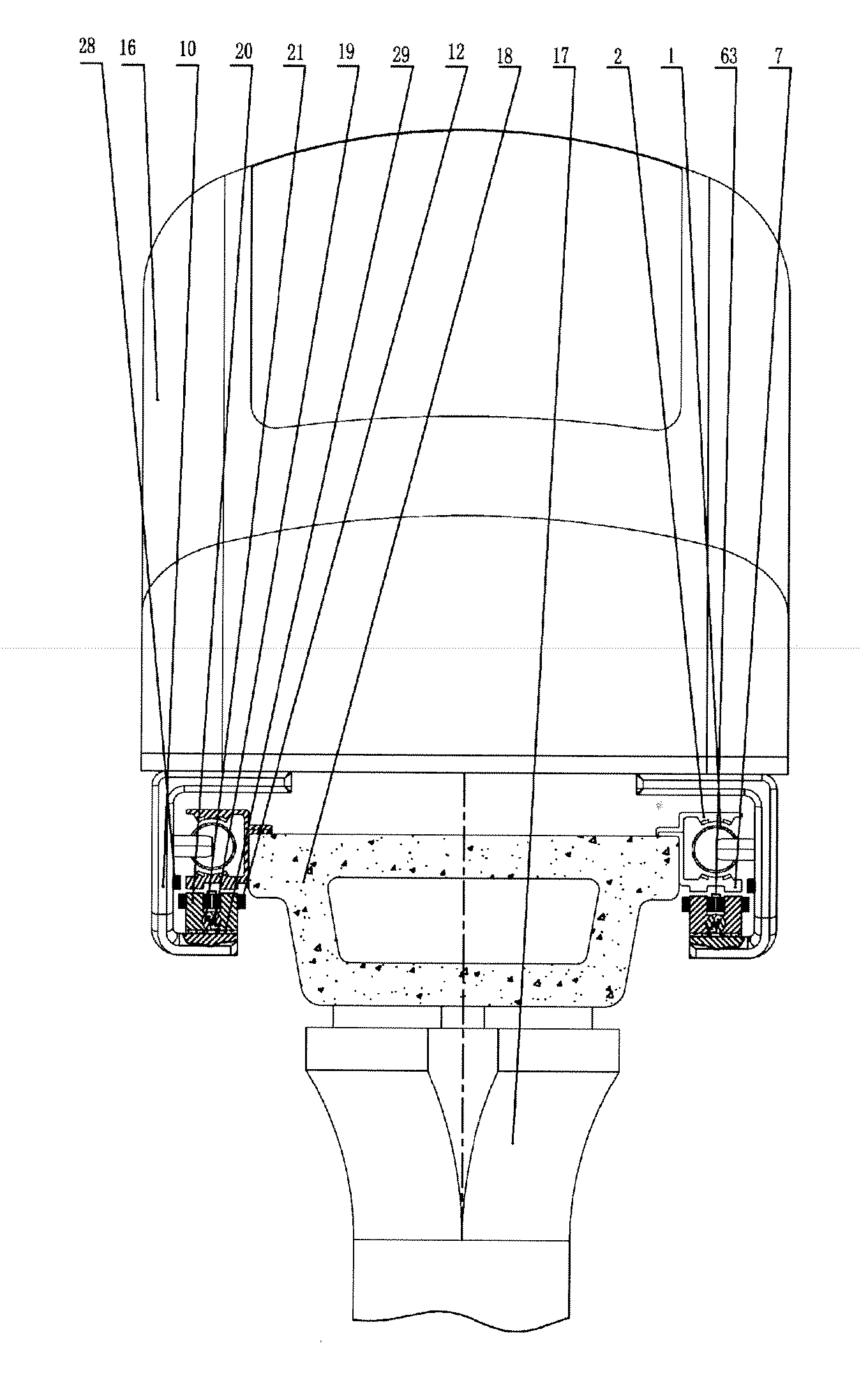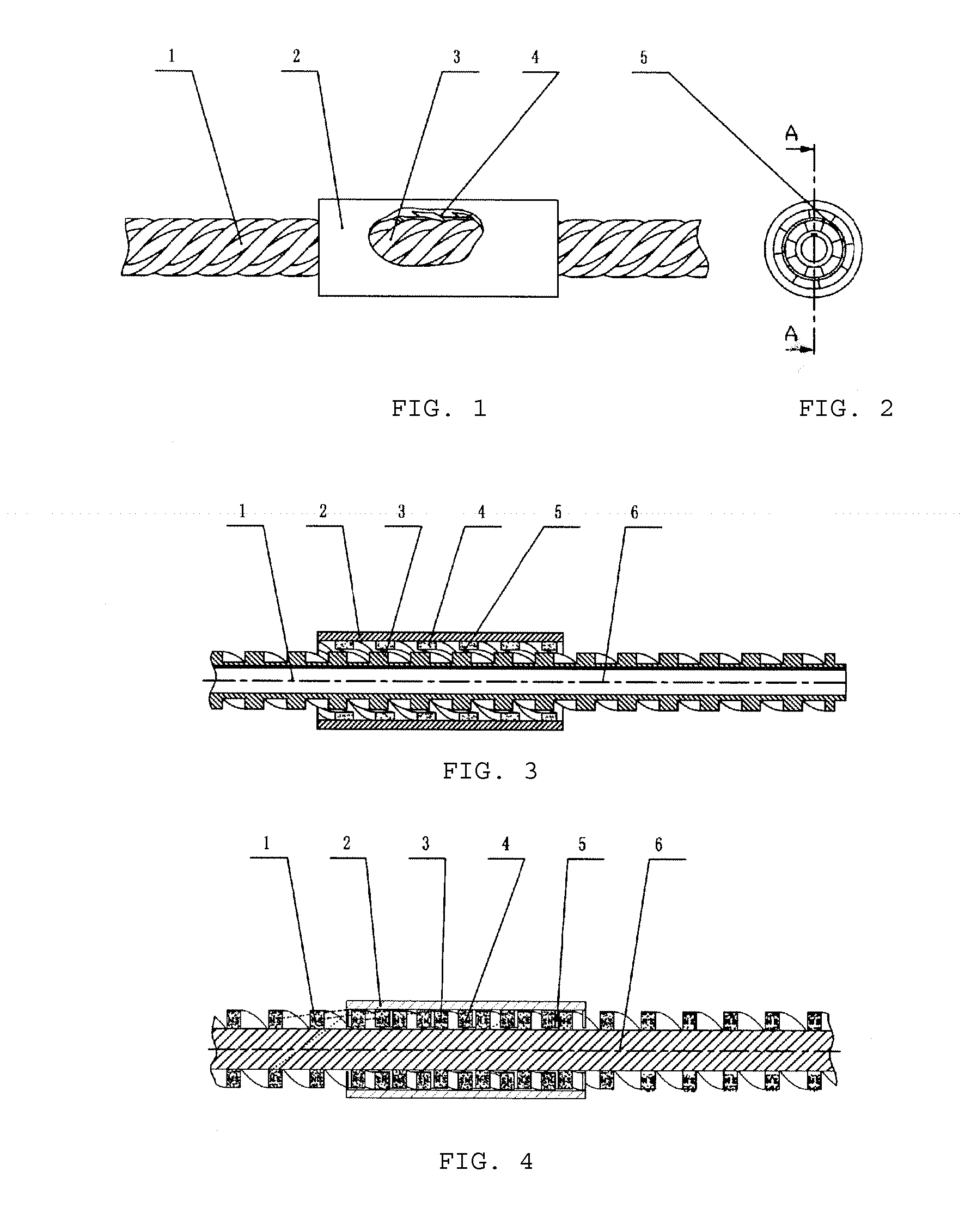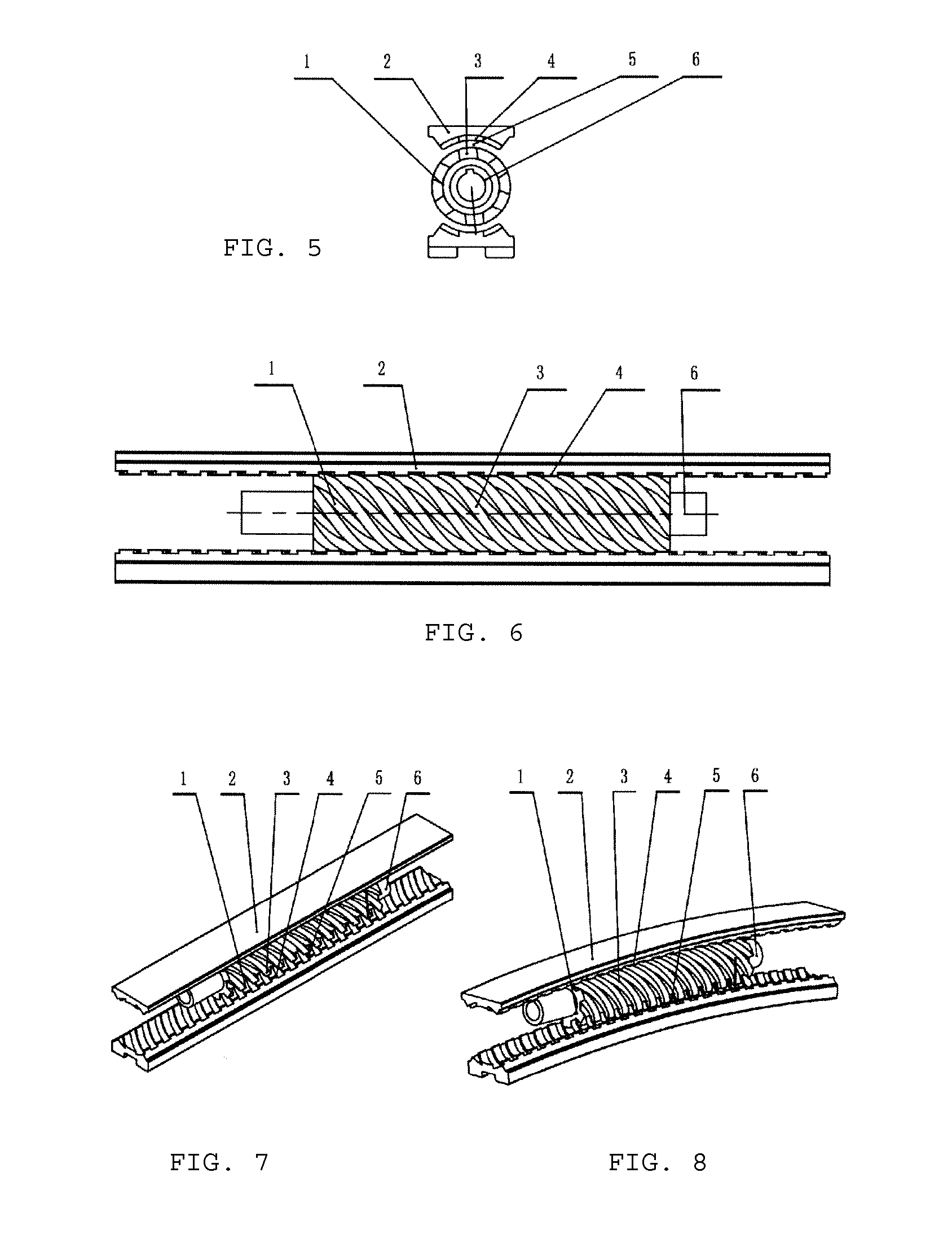Linear permanent magnet drving system and permanent magnet driving and magnetic suspension roadway system
- Summary
- Abstract
- Description
- Claims
- Application Information
AI Technical Summary
Benefits of technology
Problems solved by technology
Method used
Image
Examples
embodiment 1
Viaduct Hanger Rail-Type Permanent Magnet Driving Maglev Train
[0122]Shown as FIG. 26, a concrete viaduct cross beam 18 is laid on a concrete pier 17, the bottom of the concrete viaduct cross beam 18 is fixedly connected with the spiral stator 2 which is coaxial with the spiral rotor 1, the spiral stator is bushing-shaped with an opening facing downwards and is formed, in a manner of extending downwards, with an integrated structure of a groove positioning rail and a magnetically conductive armature 7 at the opening.
[0123]The spiral rotor 1 is connected with a vehicle body 16 via a connecting arm 10, the connecting arm 10 is provided with a U-shaped iron core 20, a middle transverse bridge of the U-shaped iron core 20 is embedded with a permanent magnet adjustment device, namely the middle part is grooved for the installation of a cylindrical rotating shaft 21 of a permanent magnet 19, the end part where the U-shaped iron core 20 is corresponding to the armature 7 is provided with el...
embodiment 2
Low-Speed Underground Rail Maglev Airbus
[0127]Shown as FIGS. 28 to 30, an underground hole 24 is arranged below a roadbed 23 of bus line. The underground hole 24 is internally provided with a linear permanent magnet driving system, a permanent magnet levitation system capable of adjusting levitation suction, a guide wheel safety system and a electromagnetic auxiliary control system, a maglev airbus body 16 is supported by a quite long connecting arm 10 to aerially travel at 2 meters above the ground, i.e. the airbus, the airbus body 16 is connected with a spiral rotor 1 through the connecting arm 10. Car, jeep and other small locomotives can travel in the space at the bottom of the airbus, and parking and traveling of the airbus causes no hindrance to passage of other vehicles, thus barrier-free parking can be realized.
[0128]The airbus is driven by the linear permanent magnet driving system arranged inside the underground hole 24, and levitation thereof is implemented and controlled...
embodiment 3
Viaduct Encircling Maglev Train
[0133]Shown as FIG. 31, the viaduct encircling maglev train is characterized in that, a concrete viaduct cross beam 18 is laid above a concrete viaduct pier, left and right sides of the concrete viaduct cross beam 18 are fixedly connected with spiral stators 2, which is similar to the above maglev airbus, spiral rotors 1 arranged concentrically with the spiral stators 2 are connected with a train body 16 through connecting arms 10, the connecting arms 10 are provided with H-shaped iron cores 20; the difference from the maglev airbus is that this structure further comprises an electromagnetic auxiliary control system, i.e. levitation-assistant electromagnetic coils 12 and guidance-assistant electromagnetic coils 28 are mainly related to; the levitation-assistant electromagnetic coils 12 are installed on the iron cores 20 of the permanent magnet levitation system in vertical correspondence to armatures 7; displacement sensors 63 are installed on the conn...
PUM
 Login to View More
Login to View More Abstract
Description
Claims
Application Information
 Login to View More
Login to View More - R&D
- Intellectual Property
- Life Sciences
- Materials
- Tech Scout
- Unparalleled Data Quality
- Higher Quality Content
- 60% Fewer Hallucinations
Browse by: Latest US Patents, China's latest patents, Technical Efficacy Thesaurus, Application Domain, Technology Topic, Popular Technical Reports.
© 2025 PatSnap. All rights reserved.Legal|Privacy policy|Modern Slavery Act Transparency Statement|Sitemap|About US| Contact US: help@patsnap.com



